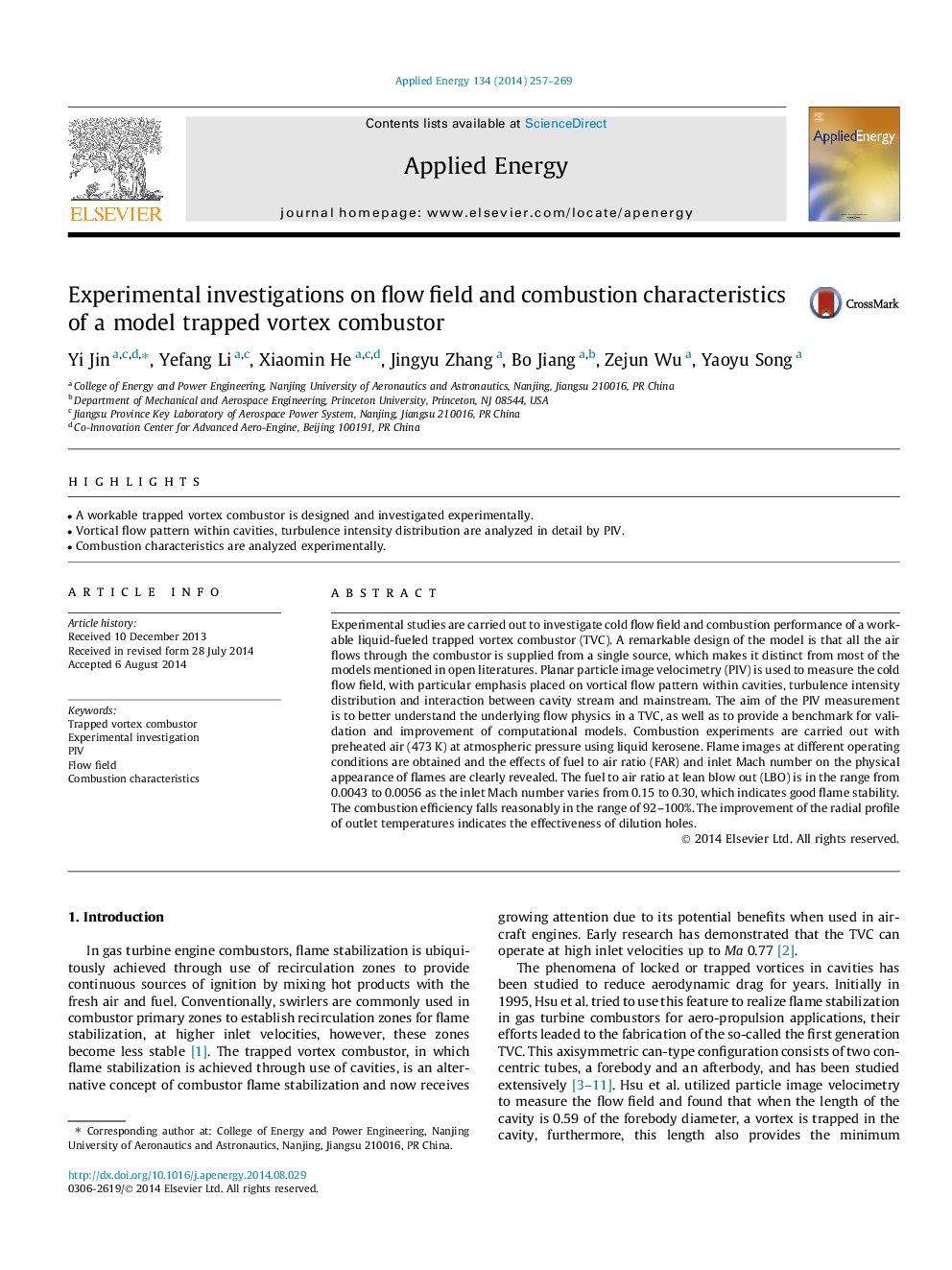| Article ID | Journal | Published Year | Pages | File Type |
|---|---|---|---|---|
| 6689557 | Applied Energy | 2014 | 13 Pages |
Abstract
Experimental studies are carried out to investigate cold flow field and combustion performance of a workable liquid-fueled trapped vortex combustor (TVC). A remarkable design of the model is that all the air flows through the combustor is supplied from a single source, which makes it distinct from most of the models mentioned in open literatures. Planar particle image velocimetry (PIV) is used to measure the cold flow field, with particular emphasis placed on vortical flow pattern within cavities, turbulence intensity distribution and interaction between cavity stream and mainstream. The aim of the PIV measurement is to better understand the underlying flow physics in a TVC, as well as to provide a benchmark for validation and improvement of computational models. Combustion experiments are carried out with preheated air (473Â K) at atmospheric pressure using liquid kerosene. Flame images at different operating conditions are obtained and the effects of fuel to air ratio (FAR) and inlet Mach number on the physical appearance of flames are clearly revealed. The fuel to air ratio at lean blow out (LBO) is in the range from 0.0043 to 0.0056 as the inlet Mach number varies from 0.15 to 0.30, which indicates good flame stability. The combustion efficiency falls reasonably in the range of 92-100%. The improvement of the radial profile of outlet temperatures indicates the effectiveness of dilution holes.
Related Topics
Physical Sciences and Engineering
Energy
Energy Engineering and Power Technology
Authors
Yi Jin, Yefang Li, Xiaomin He, Jingyu Zhang, Bo Jiang, Zejun Wu, Yaoyu Song,
